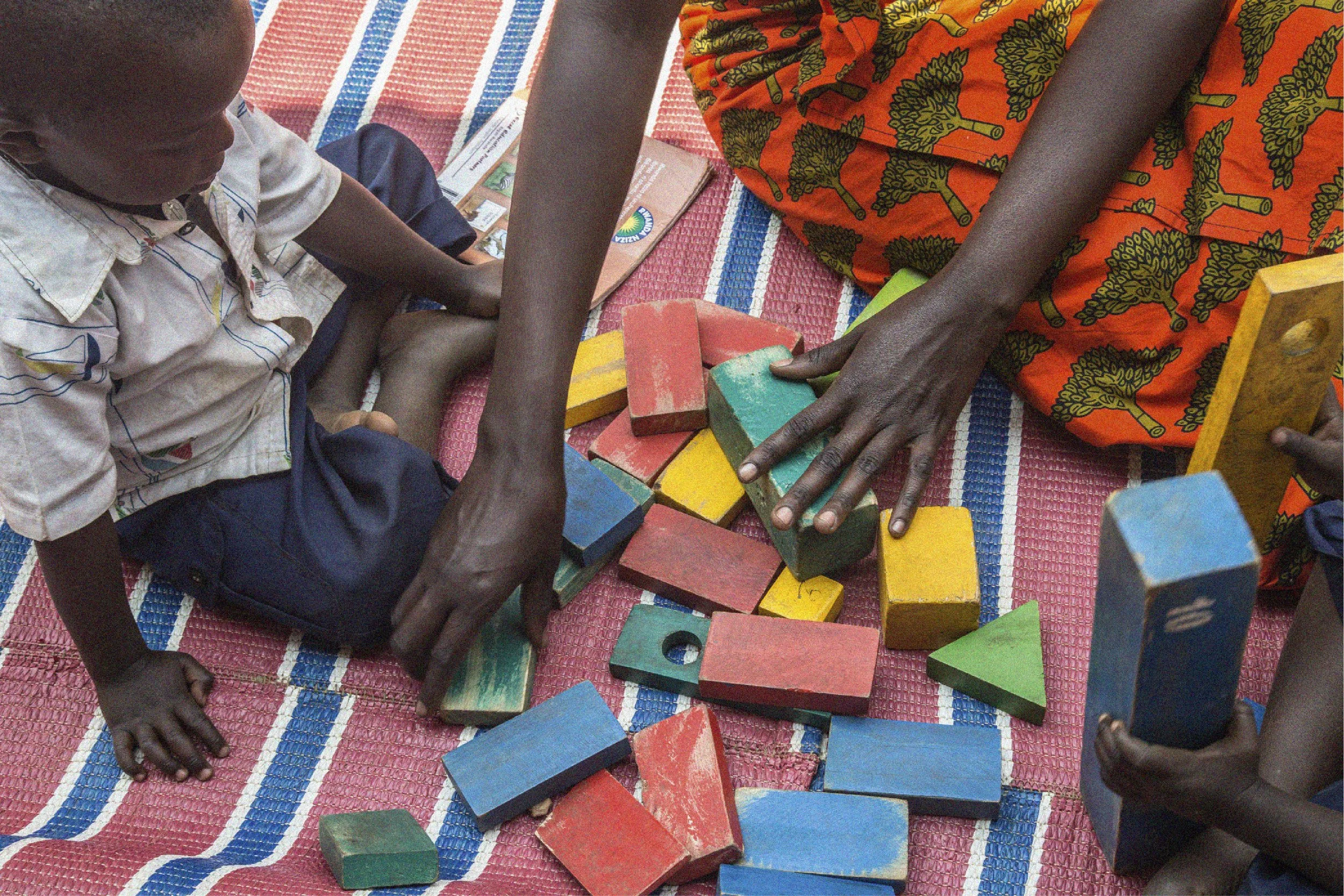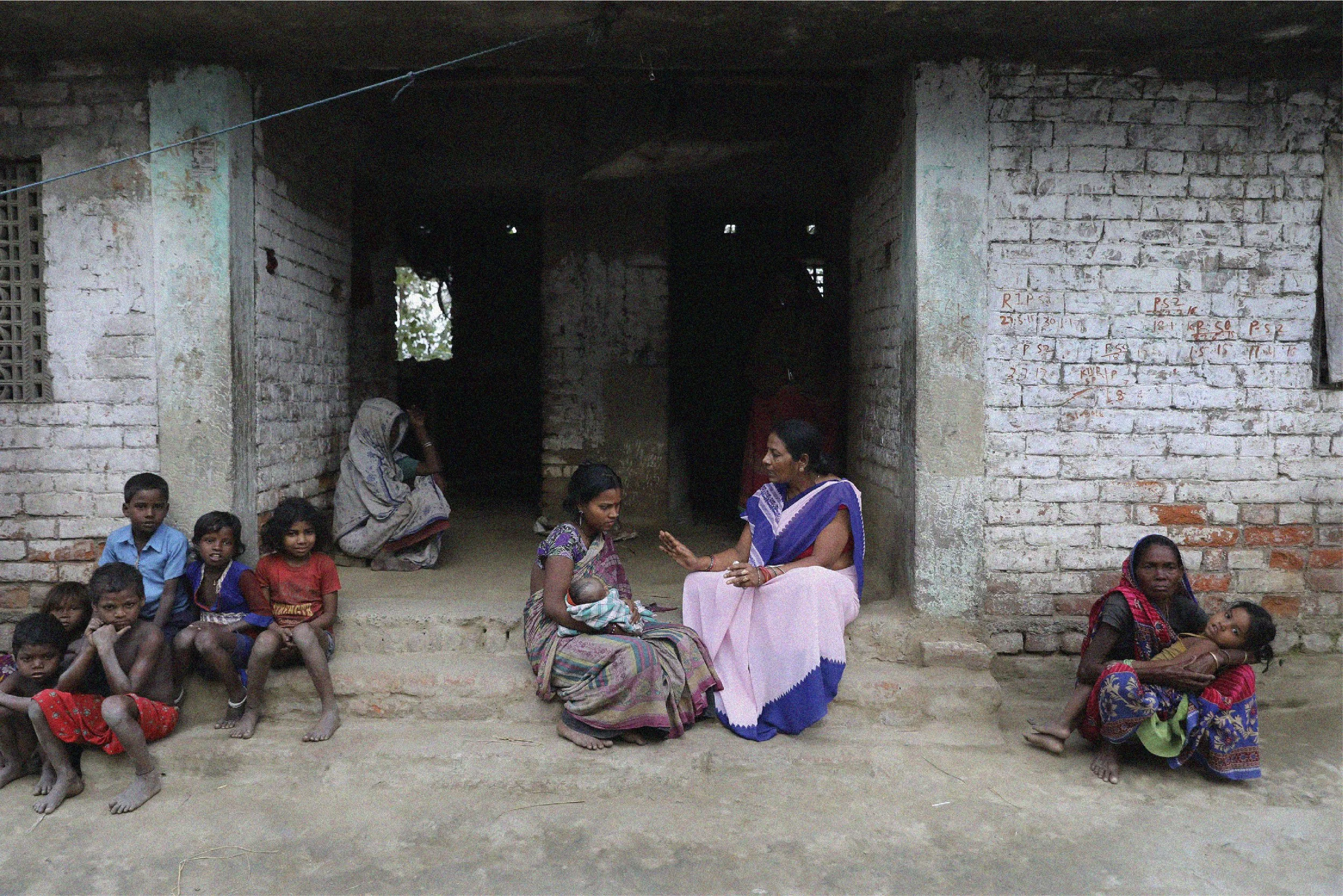
The 5 Key Steps


There is no one-size-fits-all checklist for how health and gender-focused funders should incorporate a climate lens into their strategy. However, based on our review and expert interviews, we have distilled four guiding principles and five key steps for investing at the intersection of climate, SRHR, and gender equality.

01
Assess the climate risks within your existing portfolio
Although much of this rapid risk assessment process can be done via desk research, your understanding of risks and opportunities will be stronger if you consult internal and external stakeholders, as the landscape of climate impacts and climate investments is changing very quickly.
This reflection and assessment process should help you understand:
How climate change poses a risk to SRHR outcomes in your focus geographies , and who bears the greatest burden relative to their adaptive capacity;
How climate change impacts are expected to compound and intensify over time, and what new impacts are predicted to emerge in the next 5-15 years;
Which strategies (formal or informal) your partner communities are already using to adapt to the health impacts of climate change.
Step 01. Identify current and projected climate trends in your focal geographies
Key Questions
What climate hazards and stresses are happening now in your region of focus? (Consider the full scope of impacts– not just health and SRHR)
How are those current hazards predicted to change over the next 5, 10, 15 years?
Are there new hazards that are predicted to emerge within those time windows? (e.g., new infectious diseases)
Considerations
Key direct impacts of climate change to consider include average surface temperature, amount of precipitation, aridity/humidity changes, occurrence of flooding, groundwater salinity (if in coastal area), wildfires, extreme storm events, landslides, ocean acidification, species loss
The greater the diversity of the terrain/ecology in your focal geography, the greater the diversity of climate impacts you’ll need to consider.
For example, the SRHR threats in the coastal plain might include new vector-borne diseases (e.g., Zika) and saltwater intrusion into groundwater. In contrast, threats in the mountainous area might be declining agricultural yields due to changing precipitation with accompanying increases in malnutrition for pregnant women, or storm-fueled landslides destroying health facilities and road access.
Anticipating the projected, intensifying downstream impacts of climate change is crucial to developing a proactive, climate-informed SRHR investment strategy.
Useful Resources for Understanding Climate Predictions:
Regional: IPCC’s Atlas of Global and Regional Climate Projections
Country-level:
Country ministries
Sub-national: National ministry data such as climate impact and adaptation assessments.
City, town, or community-level: Populous cities may have a city-level climate impact assessment and adaptation plan. For smaller/rural communities, consider a rapid vulnerability and capacity assessment and or community consultations.
Step 02. Map how those climate hazards affect SRHR access and outcomes
Key Questions
What are the current and projected impacts on SRHR (direct and indirect)?
Considerations
Refer to the Case Studies of Climate Impacts to get ideas for what SRHR impacts might be happening as a result of the climate hazards present in your focal region.
Consult with your existing grantees and partners to hear what they are hearing, seeing, and experiencing.
Remember that due to the siloing of health and climate sectors, grantee partners focused on SRHR might not see or understand the linkages between new or worsening negative SRHR outcomes and climate change in their regions. When consulting with existing grantee partners, this process may need to start with the basics of helping health actors see the linkages where they didn’t see them before.
Identifying future threats based on evidence and beginning to invest early is key to avoiding falling into a reactive, “whack-a-mole” funding approach.
If reliable data do not exist for your region, you may consider strategically investing in rapid situational analysis to gather gender-disaggregated data on how people in this region are and could be impacted by climate change, and to what degree women and men are differently impacted by climate change.
Step 03. Consider your focal population’s vulnerability factors and adaptation capacities
Key Questions
What are some of the factors that hinder people, particularly women and girls, in this region from being able to effectively adapt to the impacts of climate change? (For example: cultural norms, gender expectations, literacy rates, land ownership laws)
Within your geograph(ies) of focus, which populations are bearing the heaviest negative burdens of climate change, relative to their adaptive capacity?
Are there particular groups whose SRHR is especially impacted?
What strategies (formal or informal) are women and girls in your focal region already using to adapt to the impacts of climate change on their SRHR?
Considerations
Climate change is a “threat multiplier”, meaning that it amplifies and compounds existing vulnerabilities, social inequalities and weaknesses in a health system.
In general, women and girls bear disproportionate impact and have lower adaptive capacity due to social inequalities such as access to capital, literacy, and bodily autonomy. However, a person’s gender interacts with other social-demographic factors. For example, women living in poverty from rural areas in LMIC are generally thought to be among the most vulnerable to climate change (Romanello et al. 2021; Glazebrook, Noll, and Opoku 2020).
Understanding what limits a household’s ability to adapt and recover from the impacts of climate change is key when considering what pathways towards resilience are feasible and necessary.
If you have specific SRHR outcomes of interest (e.g., reducing unintended pregnancies; reducing infant mortality), consider how climate change may disproportionately shift the burden of those threats to particular populations in your focal geographies (e.g., young women who are forced to migrate).
If women and girls are already experiencing impacts, it’s very likely that they are also already figuring out ways to adapt, within the constraints they face. They might not explicitly think about their solutions as “climate resilience”, but rather just a strategy to survive and maintain bodily autonomy and dignity amid new challenges.
If you aren’t sure or don’t have any insight on this, it’s an opportunity to invest in some light exploratory work with local women’s groups to identify their concerns, hear their vision for the future, and their proposed solutions. One of the key roles of funders is to elevate and enable the locally-led and locally-adapted solutions that women and girls are already doing or thinking about.
Taking time to gather ground-level input and centering women’s ideas and visions also helps ensure that women and girls aren't treated only as vulnerable victims, but as powerful agents of change and resilience.

02
Identify and build cross-sectoral partnerships with climate funders and policy actors
This step should help you identify:
What climate-focused institutions, investors, and stakeholders are active in your focal region(s)
Potential opportunities to advance health, gender, and SRHR within the governmental climate adaptation agenda and budget
Ideas for how you might to de-silo your approach to funding, program planning and partnership development
Step 01. Map the landscape of climate and environment investors and actors in your focal region(s) and adjacent countries
Key Questions
If your institution already funds climate/environment work but in a separate portfolio, what are their priorities and who are their partners?
What local and national climate and environment organizations and funders are active in the country/region?
Based on your climate risk/opportunities assessment, in what regions/countries might you need to expand or initiate new relationships?
Considerations
As the climate crisis accelerates, there is a rapidly growing pool of funding going towards climate adaptation and resilience. In just the philanthropic section alone, climate change giving rose 25% between 2020 and 2021 — three times faster than overall philanthropic giving. Very few of these investments explicitly consider gender or SRHR. Rather than just trying to squeeze more results out of your existing funding pot, how might you partner and influence climate investments?
A few starting points for mapping climate funds and major financing initiatives in your focal geographies:
Groups to look for and connect with in your focal geography:
Local environmental groups, such as nature conservation groups
Stakeholders who are doing climate projections such as the meteorological agency; Ministry of Water; Ministry of Environment
Disaster management groups, those that handle migration and relocation policies
Philanthropic and public funders focused on environmental management, climate resilience, and conservation.
If there are new predicted impacts that will aect SRHR (eg. spread of Zika, dengue, malaria into new geographies), how might you begin to invest in the cross-sectoral relationships, infrastructure, and community health strategies that will be needed to manage that new SRHR threat?
Think outside your current geographical bounds. If there is a high risk of displacement and migration for people in your focal geography, how might you start investing in partnerships in the neighboring countries which will be the migration destination for displaced people?
Step 02. Understand the climate-health-gender policy context, and identify opportunities for influence in your focal region(s)
Key Questions
What climate adaptation plans or investments are in place at the country, regional, or city level?
Who are the government and private actors creating and carrying out these formal adaptation plans?
Has the focal country created a Health National Adaptation Plan? Is gender and/or SRHR included? If not, is health mentioned as part of the national climate adaptation plan or policies? Is gender and/or SRHR mentioned?
What legal and policy framework(s) does the country have on gender equality and health equity? Is climate change considered or mentioned currently?
What are the current mechanisms on gender equality in national and health sector processes, such as a unit on gender in the health ministry?
Considerations
Understanding what governmental priorities are regarding climate adaptation and what investments are active or committed will help you identify policy opportunities and potential co-funders who aren’t thinking about SRHR but are investing in sectors that affect SRHR such as agriculture and mobility.
As of April 2023, 45 countries have submitted National Adaptation Plans to the UNFCCC and an estimated 170 countries include adaptation as part of their climate policies.
In most cases, health, gender, and the intersection of the two are not mentioned or considered in current adaptation plans. If this is the case for your countr(ies) of focus, what opportunities exist for you as a funding partner to advocate for inserting specific consideration of SRHR, gender, and health into the adaptation approach?
Achieving explicit consideration of gender, health, and SRHR in national climate adaptation policies and plans is a key lever for funders to build priority alignment with climate-focused government partners.
Recommended Resources
The Gender Climate Tracker has country profiles and analyzes gender integration into climate policy, including an evaluation of Nationally Determined Contributions (NDCs).
Some countries have also done Health National Adaptation Plans, based on WHO guidance. There is currently no centralized repository for HNAPs, so due diligence at the country ministry level is needed.
Toolkit for a gender-responsive process to formulate and implement National Adaptation Plans (NAPs). NAP Global Network and UNFCCC. (2019). Link
For more detailed guidance and checklists on this point, see the WHO’s guidance on Mainstreaming gender in health adaptation to climate change programs
Step 03. Plug into existing climate-health-gender communities of practice
Considerations
Learn from local climate stakeholders what the best ways to stay up-to-date on the rapidly changing landscape of climate adaptation funds and policy is in your focal geographies. This is critical in order to identify and act on opportunities to embed gender, health, and SRHR into emerging climate adaptation investment locally.
Here a few recommended global communities of practice and coalitions:

Learn and Pilot
03
This step should help you identify:
A preliminary assessment of what aspects of your existing SRHR investments you may want to double-down on, which you want to wind down
How you might adapt existing investments to try out new tactics in response to the identified climate risks
A plan for trying new exploratory integrated climate-SRHR investments
Step 01. Identify possible climate-informed changes to SRHR investments to test out through existing and new investments
Key Questions
Stop / Wind-down: What current investment areas are at risk of being ineective or present diminishing returns due to the impacts of climate change?
Start / Explore: What opportunities to increase the climate resilience of SRHR programs and services do you want to invest in exploring? What anticipated impacts/trends do you need to start planning for?
Continue / Strengthen: Are there aspects of your existing strategy that will continue to be valuable in order to support women and girls’ resilience to climate impacts on their SRHR?
Step 02. Work with existing grantees to adjust existing investments to include climate considerations
Considerations
Based on the findings from the risk/opportunity assessment, review suitable existing investments for “quick win” adjustments to support shared learning about how to integrate climate considerations and measure progress in building climate resilience and adaptive capacity for SRHR.
Together, identify activities that can feasibly be adapted to support climate adaptation and resilience aims within the existing scope and investment timeline.
Adapt budget lines to support additional training or resources to meet these aims. Remember that grantees who have been primarily working in a narrow focus area will need support to expand their focus and think in new systems-minded ways.
Work with grantee partners to identify additional process and outcome MEL indicators that will enable you to monitor progress towards climate resilience goals. See the MEL section for ideas and guidance.
Have intentional checkpoints with your grantee partners to review what’s working, what’s challenging, and what evidence gaps are emerging. The goal is to gather enough early evidence and proof of concept to inform new pilot investments and ultimately your larger, longer-term portfolio strategy development with confidence.
Step 03. Pilot new integrated climate-SRHR investments
Considerations
After gathering initial learnings and evidence from making adjustments with your existing grantee partner, identify where you want to make some new exploratory investments.
Develop and advertise a climate-informed RFP for small, time-bound, exploratory investments explicitly at the intersection of climate and SRHR.
Focus the RFP round on small, rapid-cycle experiments designed to help you and your grantee partners learn more about what works and then adjust accordingly.
When releasing the RFP, consider hosting an informational webinar for prospective applicants that gives a 101 about the linkages and helps them reflect on the intersection before developing a proposal.
Incentivize organizations to apply with “unconventional”, cross-sectoral partnerships (e.g., an SRHR organization pairing with a climate-smart agriculture organization).
Earmark funding specifically for relationship-building among cross-sectoral grantees and for participatory community consultation processes, beyond what you might have typically earmarked in past grant rounds.
When scoring applications, relax the requirement for rigorous proof-of-concept evidence from potential grantees at the application stage. As a sector, we don’t have strong evidence yet about what solutions work to maintain or improve SRHR outcomes in the face of climate stresses and shocks. When scoring applications, you might increase the weighting on “innovation” as a key scoring criteria, and lower the weight on “evidence of impact.”
Here are some examples of exploratory climate-health funding approaches to support innovative, locally-led solution development:
Grand Challenges Canada- STARS program
Burroughs Wellcome Fund - Climate-Health Seed Funding

Measure and Adjust
04
Step 01. Identify relevant climate resilience-related targets, metrics, and indicators to track, and adjust them over time.
Considerations
Include indicators to track process, not just outcomes. This is important for two reasons: First, because you and your grantees will be in a learning mindset, you want to capture data about learning pathways to help you improve the process for the future. Second, “resilience” is not just measured by outcome, but by process improvements.
See examples and recommendations in our MEL section for how to adjust your measurement and evaluation approach when integrating climate resilience considerations and targets.
Step 02. Use results from piloted investments to inform new rounds of exploration and evidence generation
Considerations
Identify evidence gaps to fill through future investments. The evidence base around climate and SRHR is growing but still limited, particularly when it comes to evidence about what types of interventions are promising in building resilience of SRHR systems to climate hazards.
Harvest lessons from any co-funding explorations with climate funders/partners, and identify new co-funding opportunities to pursue.
Review and adjust your MEL metrics and indicators based on reflection with grantee partners.

Refine Portfolio Strategy
05
Step 01. Establish and iteratively refine your integrated investment strategy at the portfolio level
Considerations
Identify what new integrated climate-SRHR investments you want to make based on the performance of the most recent round. Keep in mind that performance should ideally be measured in terms of outcomes and process indicators over several years.
Establish and iteratively adjust performance targets based on your learning cycles
Incentivize the integration of climate-health-gender considerations across funding portfolio(s). If your institution funds climate work in a separate portfolio, how might you work with those internal stakeholders to integrate gender and SRHR metrics and indicators into the climate portfolio? What opportunities are there to have shared metrics and indicators across the climate portfolio and health or gender portfolio?
Step 02. Pursue opportunities for cross-sectoral strategic influence
Considerations
Identify what new integrated climate-SRHR investments you want to make based on the performance of the most recent round. Keep in mind that performance should ideally be measured in terms of outcomes and process indicators over several years.
Establish and iteratively adjust performance targets based on your learning cycles.
Incentivize the integration of climate-health-gender considerations across funding portfolio(s). If your institution funds climate work in a separate portfolio, how might you work with those internal stakeholders to integrate gender and SRHR metrics and indicators into the climate portfolio? What opportunities are there to have shared metrics and indicators across the climate portfolio and health or gender portfolio?







